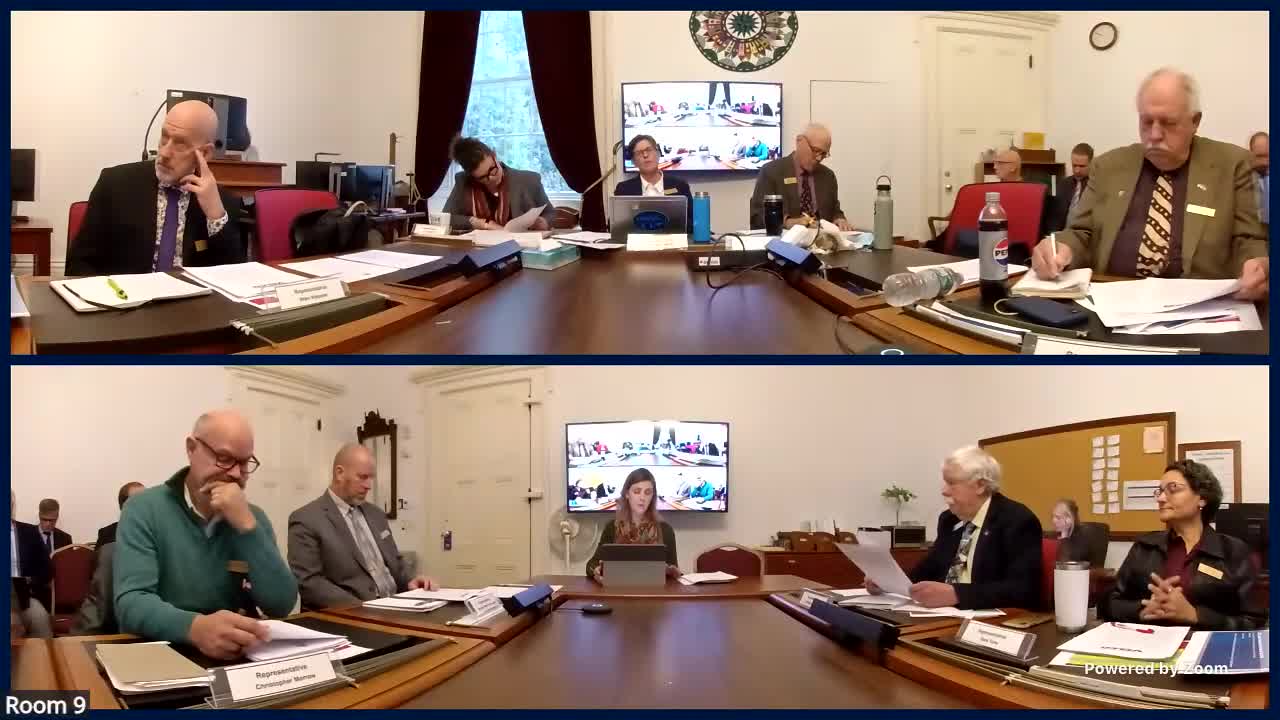VELCO says DOE smart‑valve grant will ease flows, but federal policy changes paused community benefits
October 31, 2025 | Environment & Energy, HOUSE OF REPRESENTATIVES, Committees, Legislative , Vermont
This article was created by AI summarizing key points discussed. AI makes mistakes, so for full details and context, please refer to the video of the full meeting. Please report any errors so we can fix them. Report an error »

The Vermont Electric Power Company (VELCO) told the House Committee on Energy and Digital Infrastructure on Oct. 30 that a Department of Energy Grid Resilience Innovation Partnership (GRIP) grant will fund a grid‑enhancing 'smart valve' on the PV‑20 intertie with New York, but that federal direction has halted planned community‑benefit work tied to the grant.
For the record, Shana Loisel, who identified herself as a VELCO representative, said VELCO and the Electric Power Research Institute (EPRI) were awarded a $13 million DOE GRIP grant to install a smart valve device on the PV‑20 transmission line under Lake Champlain. Loisel said the device will allow VELCO to control power flows more precisely across the New York‑Vermont link and extend the life of an aging phase‑shifting transformer. "We expect that this project will be in service by mid 2027," Loisel said.
Loisel told the committee that while the grant remains active, the DOE directed GRIP recipients to stop activities associated with diversity, equity and inclusion components of community benefits plans and that those costs would no longer be reimbursable after January 2025. She said VELCO's planned workforce, education and community‑partner efforts tied to the GRIP award are therefore on hold.
Loisel also described other transmission priorities: an ongoing Franklin County line upgrade using a double‑bundle conductor to reduce losses, a systemwide pole‑replacement and line refurbishment program, and an assessment of the aging Highgate converter that brings Hydro‑Quebec power into Vermont. She said manufacturers now build much larger converter units and lead times can approach a decade, so VELCO is evaluating sizing, siting and regional cost‑sharing options.
On funding, Loisel said regionally beneficial projects are subject to ISO New England review and regional cost allocation, while Vermont‑only reliability work remains a state responsibility. She noted stakeholder efforts to create an independent "asset condition reviewer" to vet regional proposals before approval, a change the Vermont Department of Public Service has advocated for.
Why it matters: the GRIP project aims to improve reliability and avoid costlier line‑builds, but the federal disallowance of community‑benefit reimbursements reduces planned workforce and local engagement components of the award. Aging interties such as Highgate will require multi‑state planning and large capital commitments with long equipment lead times.
Reporting notes: direct quotations and specific grant figures are taken from testimony by Shana Loisel to the committee on Oct. 30, 2025. Committee members requested follow‑up on the exact amount budgeted for community benefits and that figure remains to be provided on the record.
For the record, Shana Loisel, who identified herself as a VELCO representative, said VELCO and the Electric Power Research Institute (EPRI) were awarded a $13 million DOE GRIP grant to install a smart valve device on the PV‑20 transmission line under Lake Champlain. Loisel said the device will allow VELCO to control power flows more precisely across the New York‑Vermont link and extend the life of an aging phase‑shifting transformer. "We expect that this project will be in service by mid 2027," Loisel said.
Loisel told the committee that while the grant remains active, the DOE directed GRIP recipients to stop activities associated with diversity, equity and inclusion components of community benefits plans and that those costs would no longer be reimbursable after January 2025. She said VELCO's planned workforce, education and community‑partner efforts tied to the GRIP award are therefore on hold.
Loisel also described other transmission priorities: an ongoing Franklin County line upgrade using a double‑bundle conductor to reduce losses, a systemwide pole‑replacement and line refurbishment program, and an assessment of the aging Highgate converter that brings Hydro‑Quebec power into Vermont. She said manufacturers now build much larger converter units and lead times can approach a decade, so VELCO is evaluating sizing, siting and regional cost‑sharing options.
On funding, Loisel said regionally beneficial projects are subject to ISO New England review and regional cost allocation, while Vermont‑only reliability work remains a state responsibility. She noted stakeholder efforts to create an independent "asset condition reviewer" to vet regional proposals before approval, a change the Vermont Department of Public Service has advocated for.
Why it matters: the GRIP project aims to improve reliability and avoid costlier line‑builds, but the federal disallowance of community‑benefit reimbursements reduces planned workforce and local engagement components of the award. Aging interties such as Highgate will require multi‑state planning and large capital commitments with long equipment lead times.
Reporting notes: direct quotations and specific grant figures are taken from testimony by Shana Loisel to the committee on Oct. 30, 2025. Committee members requested follow‑up on the exact amount budgeted for community benefits and that figure remains to be provided on the record.
View full meeting
This article is based on a recent meeting—watch the full video and explore the complete transcript for deeper insights into the discussion.
View full meeting